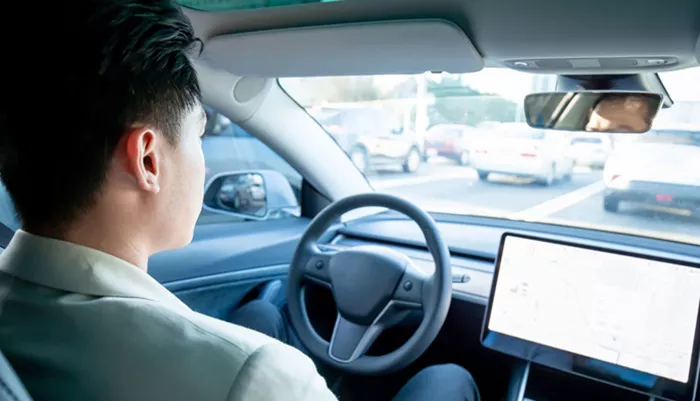Autonomous vehicles may reduce car crashes and shake up the $400 billion U.S. auto insurance market, but experts say don’t expect cheaper premiums anytime soon.
A recent Goldman Sachs report, cited by Bloomberg, suggests that while autonomous technology could reduce accidents in the long run, the types of risks insurers cover may evolve—not vanish.
“Autonomy has the potential to significantly reduce accident frequency longer-term and reshape the underlying claim cost distribution and legal liability for accidents,” wrote Goldman Sachs analyst Mark Delaney and his team.
Goldman forecasts that insurance costs could fall by more than 50% over the next 15 years, dropping from about $0.50 per mile in 2025 to $0.23 by 2040. Still, premiums are expected to continue rising over the next 10 to 15 years due to short-term pressures.
One major factor: modern cars are more expensive to fix. Even small accidents can now result in big repair bills.
“Even a minor fender bender is very expensive for many vehicles today,” said Mark Friedlander of the Insurance Information Institute.
Expensive Tech and Cyber Risks Add Complexity
Progressive, one of the largest auto insurers, warns that self-driving cars may not bring down rates. In fact, repairs on high-tech vehicles could drive costs even higher.
Autonomous vehicles also introduce new risks—especially cybersecurity threats. Both Friedlander and Goldman analysts noted that this could lead to more demand for cyber insurance coverage.
Ajit Jain, who heads Berkshire Hathaway’s insurance division, echoed these concerns. He expects the entire car insurance model to transform once self-driving cars become more common.
“Most of the insurance that is sold and bought revolves around operator errors,” Jain said during Berkshire Hathaway’s annual meeting in May. “Once that shifts, everything changes.”
If cars drive themselves and cause fewer accidents, traditional auto insurance might fade. Instead, product liability insurance could take its place. But legal questions remain unanswered: Who’s to blame when a computer crashes a car? Is it the carmaker, the software company, or someone else?
So far, there’s no clear federal policy on these issues. Regulations still vary widely by state, though lawmakers may establish national guidelines in the near future.
Tesla and Waymo Push Forward with Robotaxi Plans
Despite these uncertainties, progress continues. Waymo has expanded its robotaxi services to new U.S. cities. And Tesla is preparing to join the race.
Earlier this week, Tesla CEO Elon Musk announced plans to launch its robotaxi service in Austin, Texas, on June 22. He added that safety is a top concern, and the rollout date could change.
“We are being super paranoid about safety,” Musk posted on X (formerly Twitter).
Short-Term Pressures Keep Premiums High
While the future may bring big changes, current trends are making car insurance more expensive. Friedlander pointed to rising parts and labor costs, along with tariffs, as key drivers of higher premiums.
According to the latest Consumer Price Index released Wednesday, motor vehicle insurance costs jumped 7% over the past year. Since the pandemic began, rates have surged nearly 60%, according to Bankrate’s analysis of federal data.
So while the promise of safer, cheaper driving looms on the horizon, consumers will likely feel the financial strain for years to come.

